DN100 PN25 ball valve is made according to ISO 17292 standard. The valve body is made of A351-CF8M. It has the structural characteristics of T-shaped, floating ball, anti-fire, anti-static, anti-flying valve stem, bi-directional. Its connection mode is RF. And it has lever with dial operation mode.
Payment:
30% when order confirmed, 70% before shipmentProduct Origin:
ChinaColor:
CustomizationShipping Port:
Shanghai, ChinaLead Time:
30~60 days Ex Works after order confirmationMaterial:
A351-CF8MMethod of Operation:
Lever with dialProduct Description
|
Type |
Ball Valve |
|
Size |
DN100 |
|
Pressure |
PN25 |
|
Connection |
RF |
|
Operation |
Lever with dial |
|
Body Material |
A351-CF8M |
|
Design Norm |
ISO 17292 |
|
Face to Face Dimensions |
Manufacturer's Standard |
|
Flange Ends Dimensions |
BS EN 1092-1 |
|
Fire Safe |
API 607 |
|
Test & Inspection Code |
API 598 |
|
Temperature |
-29 ~ 120°C |
|
Applicable Medium |
Water, Oil and Gas |
Features
1. Low fluid resistance, simple structure, small volume, and light weight;
2. Tight and reliable, with good sealing, convenient operation and maintenance.
Technical Drawing
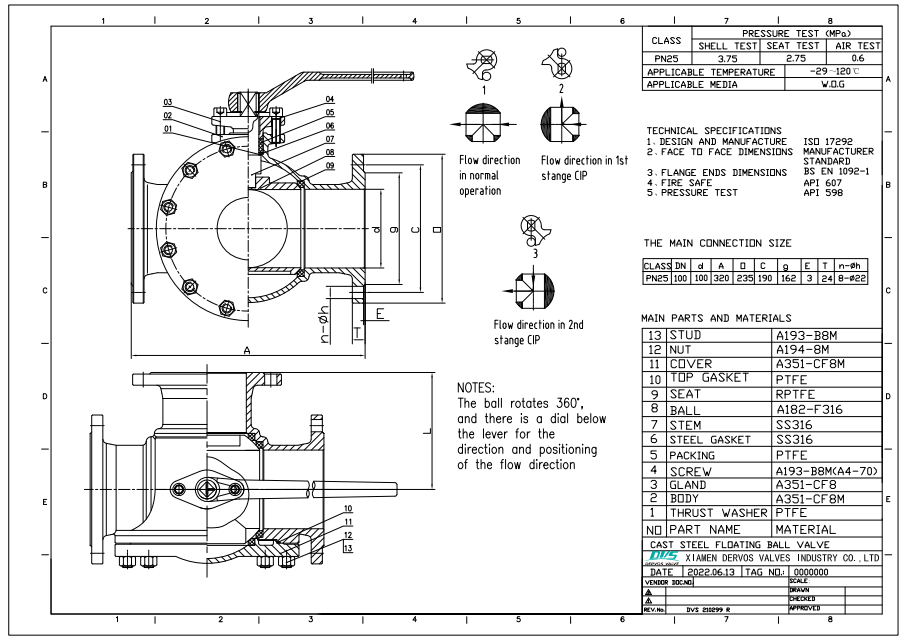
Dimension Checking
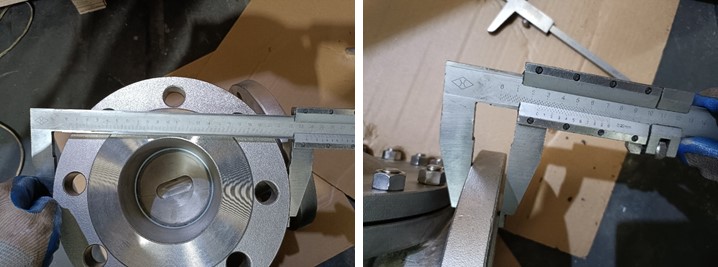
Pressure Testing
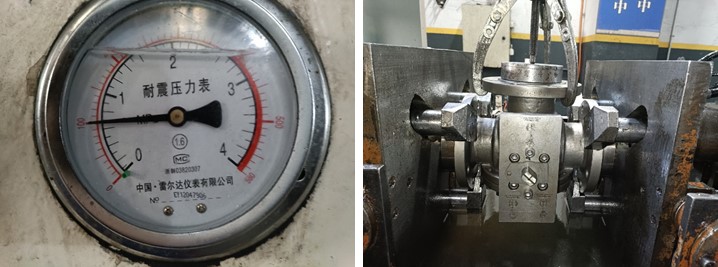
Nameplate & Packing
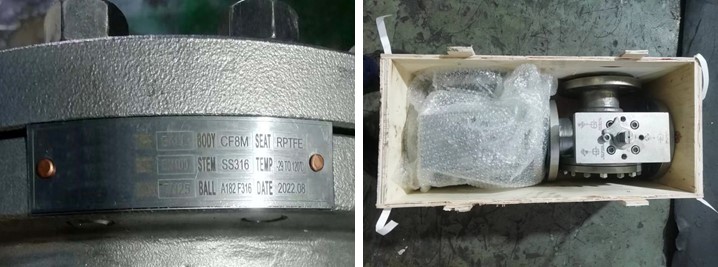
Inspection report
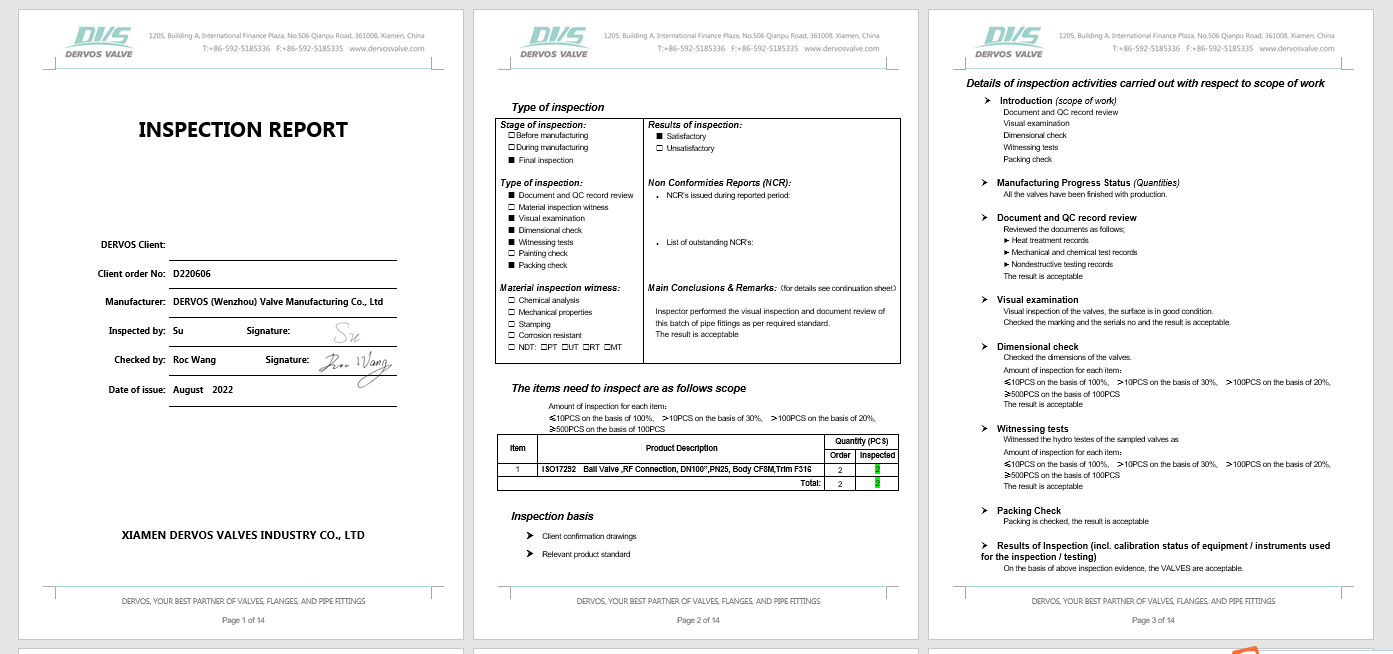
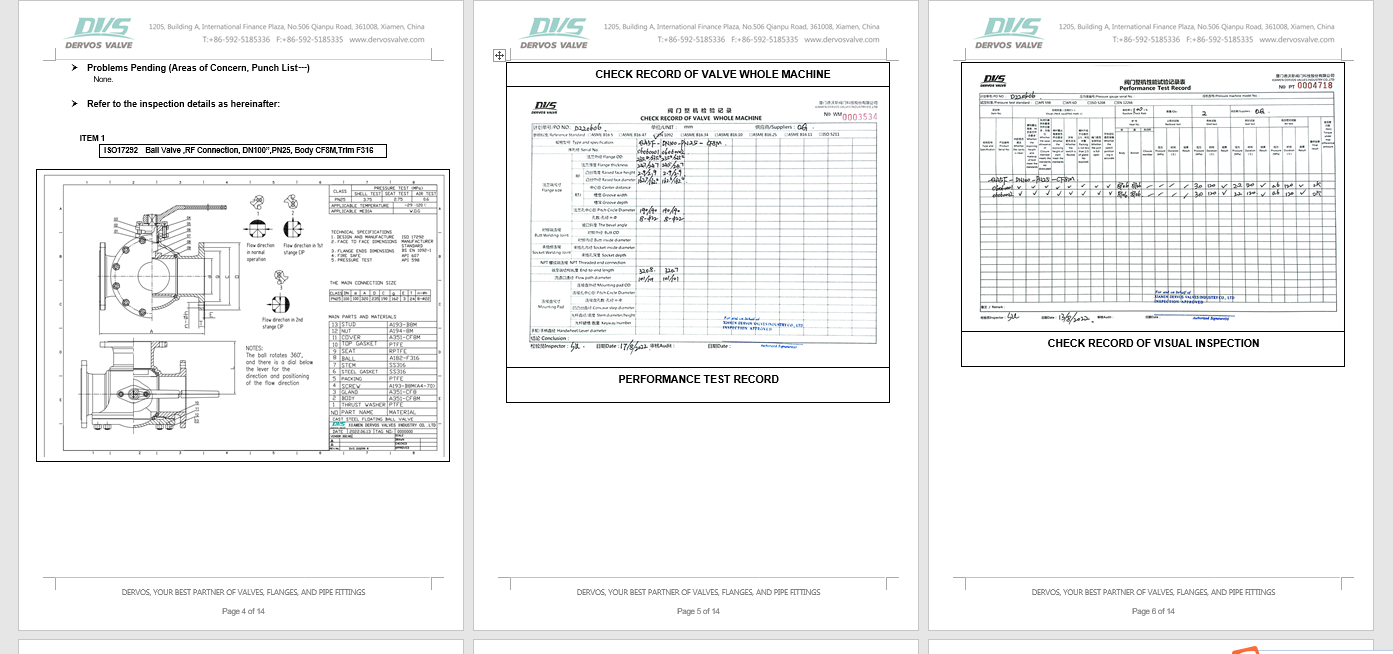
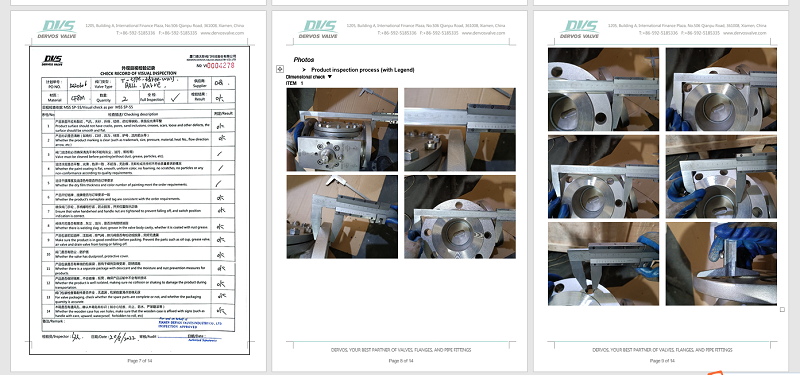
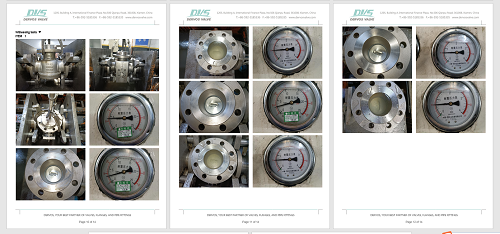
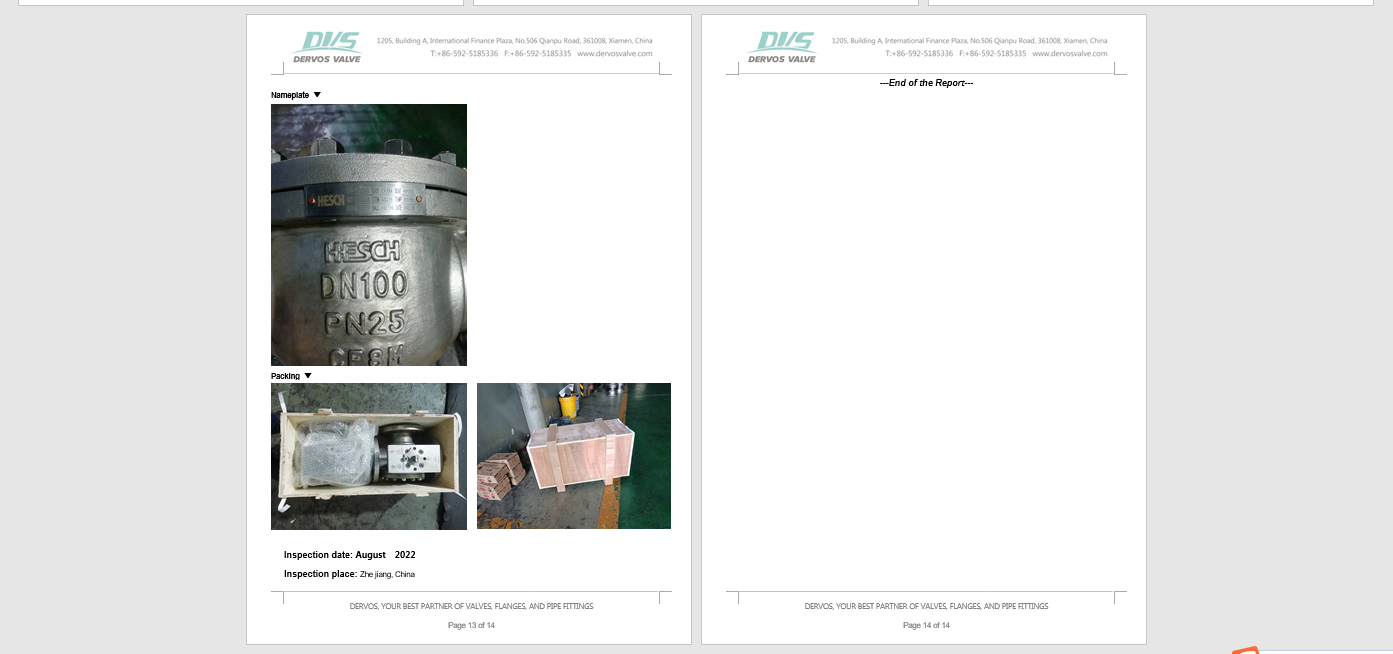
If you are interested in our products and want to know more details,please leave a message here,we will reply you as soon as we can.